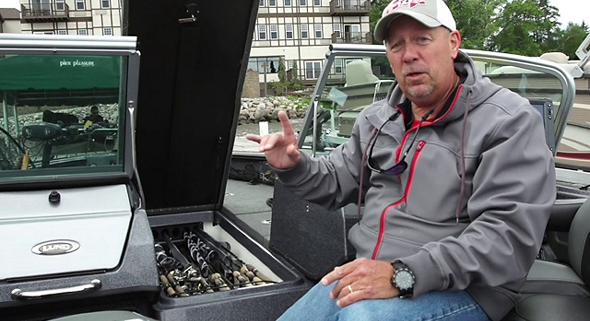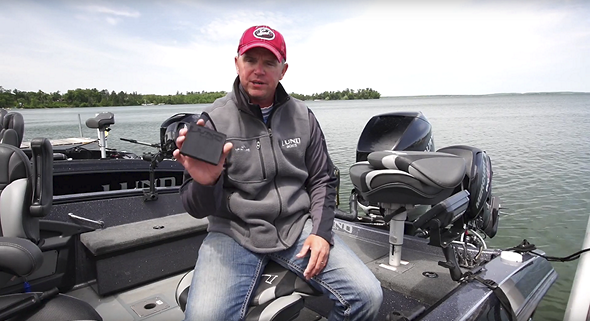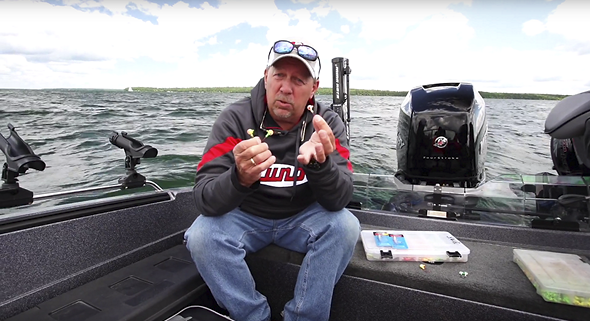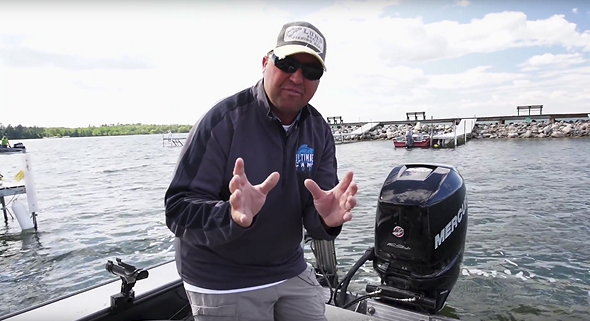Can’t-Miss Tips For Summertime Walleye
Walleye fishing on lakes can be fantastic during the summer. To help you stay on a hot bite, Lund Boats pro and National Walleye Tour competitor, Roy Vivian explains where to find walleye and shares top baits for catching fish in early, mid and late summer.

Walleye fishing on lakes can be fantastic during the summer. To help you stay on a hot bite, Lund Boats pro and National Walleye Tour competitor, Roy Vivian explains where to find walleye and shares top baits for catching fish in early, mid and late summer.
1. Early Summer
“In early summer my favorite areas to check are saddles between two humps. Those areas seem to load up with walleye.”
A saddle where Vivian catches a lot of Wisconsin walleye in June consists of a 50-yard ridge, which bottoms out at 25 feet and connects two reefs rising to 15 feet. He finds productive early summer saddles are often close to where a shoreline point extends into the main lake; points act as travel routes for walleye moving away from shallow spring habitats and bring fish to nearby main lake saddles.
Leaning On Live-Bait
Leeches factor heavily in Vivian’s early summer walleye tactics. A slow-falling leech on a 1/8-ounce jig is irresistible and particularly potent when used with forward-facing sonar to target specific fish. The depth and wind factors also make 1/4-to-3/8-ounce jigs mainstays for Vivian’s leech tactics.
Lindy rigging a leech is another reliable early summer presentation. Vivian likes using a heavy 1/2-ounce weight to keep the rig along the bottom 20 to 25 feet when moving at 0.8 miles per hour, which helps cover water faster and catch more walleye.
More On-Deck Baits
Vivian keeps a collection of rods rigged with different baits on his 2175 Pro-V’s bow deck. This makes it easy to cycle through different presentations when troubleshooting how to trigger walleye strikes.
“If I’ve got a Jigging Rap, a jerk shad on a jig, and a slip bobber all rigged up, I can hit a fish three different ways to try and get it to bite.”
He credits the redesigned Pro-V’s bow deck on-the-go rod storage for improving his casting efficiency in this regard. The feature lets him keep several rods within easy reach, which was previously more challenging with a full windshield boat.
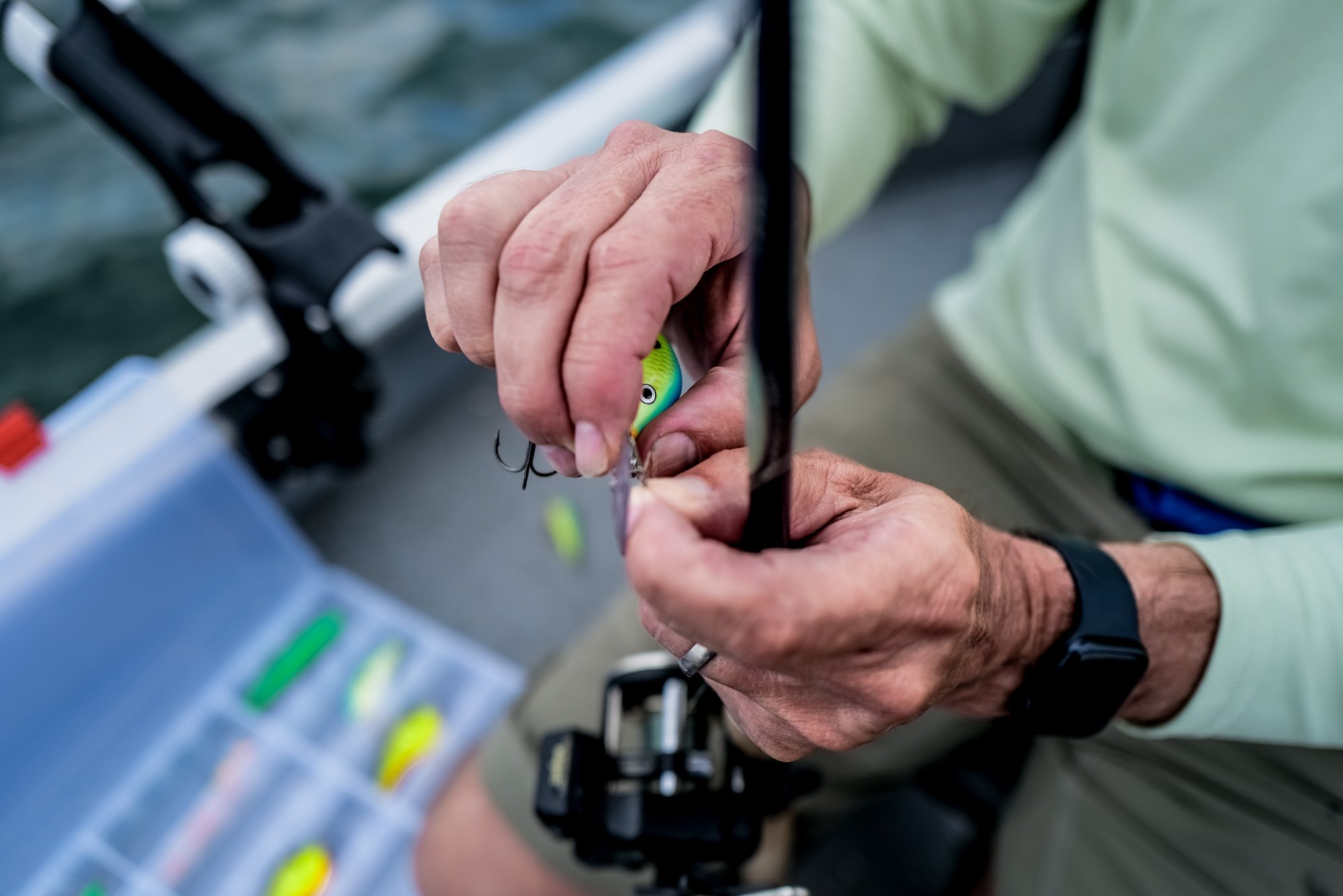
2. Mid-Summer
In July, anglers will find good concentrations of walleye holding in slightly deeper water and around offshore rocky reefs and bars between 25 and 30 feet. Rock-mud transitions within this depth range are also prime spots for Vivian.
Glide Baits Irresistible
With metabolisms in high gear, walleye feed aggressively in mid-summer and are particularly responsive to reaction lures — and Vivian’s best presentation is a glide bait. He often starts with a #7 Rapala Jigging Rap on inland lakes and a #9 on the Great Lakes, but says the Berkley Jonny Darter, Moonshine Shiver Minnow, and Northland Puppet Minnow are also worth trying.
Once a glide bait sinks into a fish's strike zone in front of the boat, Vivian starts an aggressive retrieve consisting of one to three hard snaps. Jigging cadence and drop speed are adjusted to increase interest based on fish response, which he observes using live forward-facing sonar.
Traditional Glide Bait Tactics
Forward-facing technology isn’t mandatory for catching walleye on glide baits. A basic casting approach is using the counting-down method to get the lure near bottom, and then experimenting with different jigging sequences until walleye start biting.
Vertical jigging a glide bait over fish marked using traditional 2D sonar is also effective. Keep visits short though; catchable walleye often bite fairly fast.
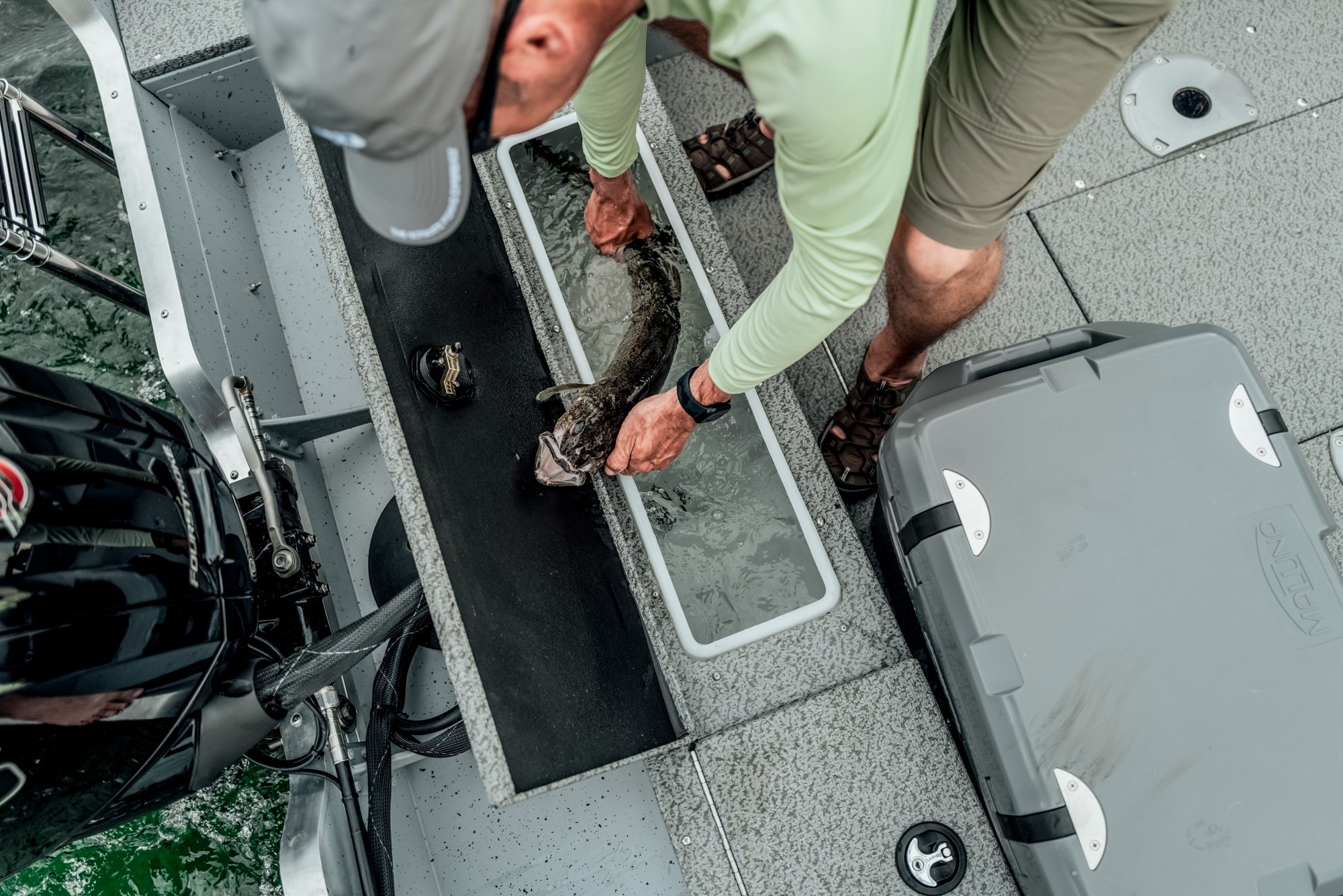
3. Late Summer
Deep, mid-lake rock structures around 30 feet continue holding walleye in August. Vivian’s preferred late-summer program is targeting walleye spending time near the edges of these rocky features, but he fishes the lakebed when fish are relating to bottom.
Casting Tactics
Soaking a leech or a nightcrawler under a slip float is a potent technique for lethargic, suspending walleye scoped using forward-facing sonar. Casting a 4 inch jerk shad on a jig and working it back with a subtle jigging or swimming retrieve is also a reliable walleye tactic for Vivian when water temps reach the high 70s.
Dragging Bait
When walleye are hugging bottom in August, Vivian returns to Lindy rigging. A leech, a creek chub around 4 to 6 inches and a nightcrawler are all good options for the rig’s business end.
A bottom bouncer pulling a smiley spinner blade and slow-death hook with a piece of nightcrawler around 1 mph is another can’t-miss presentation for Vivian. The corkscrewing crawler is a sight few walleye can pass up, even during the dog days of summer.
Whether you’ve adopted forward-facing sonar or not, keeping Vivian’s tips in mind this summer will help you stay on a steady bite when chasing warm-weather walleye.
Get Updates
Sign up for our newsletter
